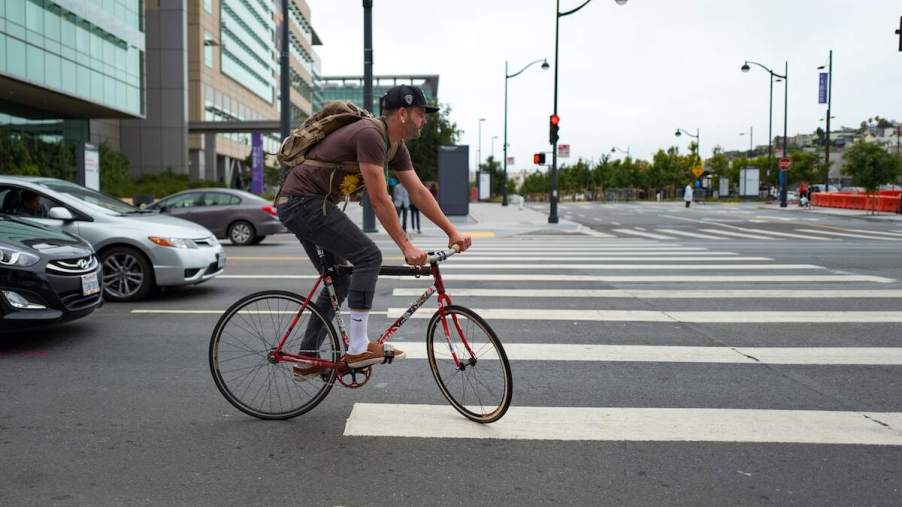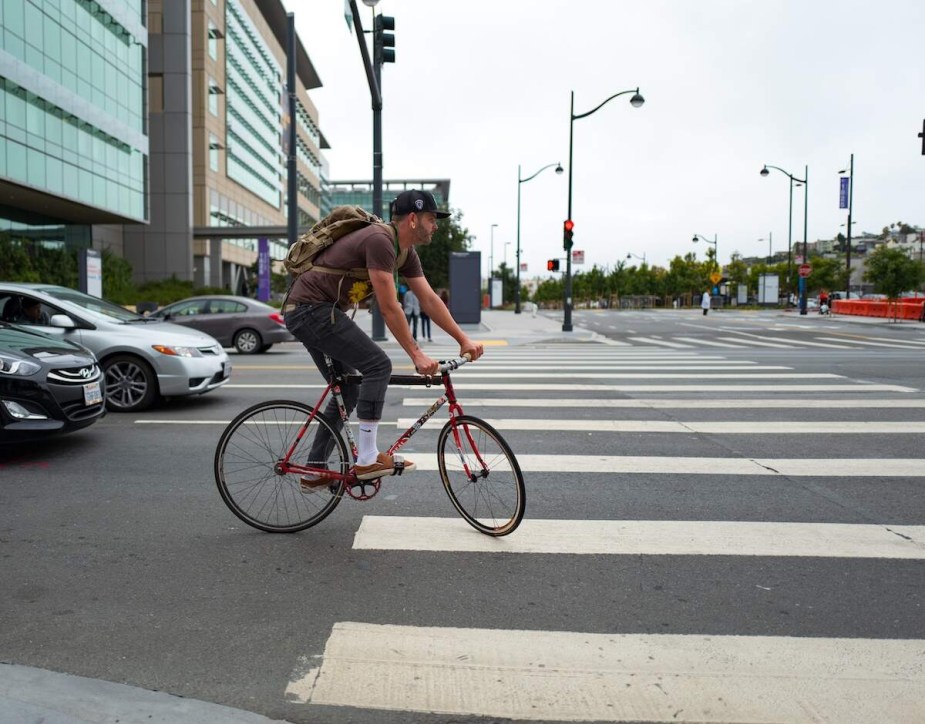
Is a Bicyclist a Driver or a Pedestrian?
Driving on a typical city street on any given day, you’ll likely see many modes of transportation. The same car safety rules apply to every driver, whether they’re operating a car, bus, or pickup truck. But what about people who get around by pedal power? Is a bicyclist a driver or a pedestrian? The answer might surprise you.
Bicyclists exist in a weird gray area of driver and pedestrian

Because bicycles are foot-powered, it makes sense the person to whom the feet belong would be defined as a pedestrian. Then again, a bicyclist operates a wheeled conveyance on the same roadways as motorized vehicles, so they could also be considered a driver. The truth is, the law says bicyclists are a peculiar hybrid of both driver and pedestrian.
In most municipalities, bicyclists must adhere to the same traffic laws as every other vehicle using public roads. A cyclist who fails to stop at a red light or zooms past a stop sign is as likely to get a ticket as anyone driving a car or truck. Some states require license plates on bikes, and some might soon ban bicycling while texting.
When a bicyclist rides on a sidewalk, the rules change. Some municipalities, including Washington, D.C., and Boston, allow bikes on sidewalks outside the downtown area. Other metropolitan areas, such as San Francisco, New York City, and Columbus, Ohio, ban all sidewalk bicycling except for cyclists younger than 13, NPR reports.
Noting the rarity of instances that would place a bicyclist in the category of “pedestrian,” HG Legal Resources explains that an overly intoxicated bicycle operator could face the same criminal penalties as a motorist charged with DWI or DUI. The same holds true for bike riders driving recklessly. Either charge could result in the loss of their driver’s license.
Do cars cause more accidents than bicycles?
Because automobiles outnumber bikes on American roads, one might assume they cause more car accidents. That assumption would be wrong.
From coast to coast, studies show that bicyclists are equally responsible for collisions.
NPR reports that a 2009 Minnesota study showed bicyclists were responsible for 49% of car vs. bicycle crashes. More than a decade later, those stats remain similar.
Pedestrian and bicycle accident stats
In September 2022, the Federal Highway Administration (FHA) announced an “unacceptable” rise in pedestrian and bicyclist fatalities. Explaining that communities that promote biking and walking are a “high priority of the Department of Transportation,” the FHA provided these stats:
- Annual pedestrian injuries: 76,000
- Annual bicyclist injuries: 47,000
- Annual pedestrian fatalities: 6,000
- Annual pedestrian injuries: 850
National Highway Traffic Safety Administration 2018 stats:
- Fatality rate per million bicyclists: seven times higher for males than females
- Injury rate per million bicyclists: five times higher for males than females
- Alcohol involved in 37% of all fatal automobile vs. bicycle accidents
- Average age of bicyclists killed in accidents increased to 47 years
To avoid becoming a statistic, follow the laws where you live
In some states and cities, traffic laws pertain only to bicycles. For instance, cyclists might be required to wear a helmet or ride as far to the right as possible at all times. Or they might be required to ride within designated lanes.
They should also yield at every intersection where right-of-way is questionable. Likewise, they should yield to traffic every time they change lanes. If bicyclists must ride in the same lane as cars, they should “take the lane” by riding in the middle and assuming the same space as a motorized vehicle, the League of American Bicyclists recommends. The organization also says if a cyclist must ride on the sidewalk, they should behave as a guest and not interfere with foot traffic.


